Archaeobotany: Research equipment
Archaeobotany: Current research | Reference collection | Links | Pages for students and field archaeologists

Archaeobotanical laboratory in Ig
Sieving equipment and cleaning procedure

Sieving equipment for washing the sediment over two sieves with 2 mm and 0,355 mm mesh sizes, sludge settling system and clean water discharge.
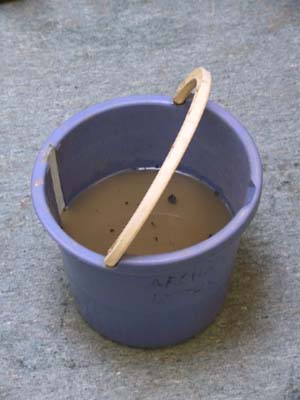
The sample is rinsed (or wet sieved) slowly and with a gentle stream of water, using semi-flotation.
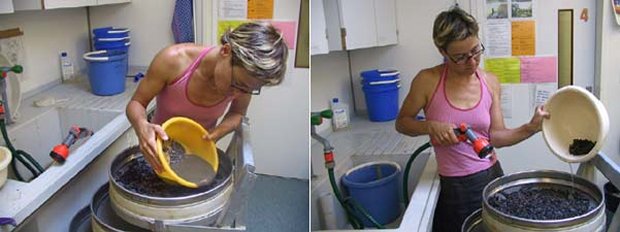
When the sample is washed (i.e. when clear water passes through the last, finest sieve), organic residues remain on the sieves.

Then we measure the volume of organic residues trapped on the sieves. Separate for the large (2 mm) and small (0,355 mm) fraction.
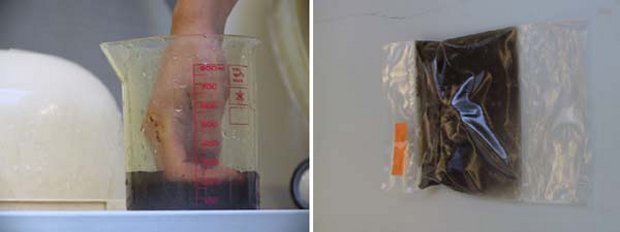
he organic fractions from the sieves (plant macro-residues) are vacuum-packed in PVC bags, separately for the large and small fractions. They shall be kept in a cool and dark place, preferably in a refrigerator, until they are examined.
If the sample size is very large, subsampling is necessary before examining/sorting the archaeobotanical sample, which should be random, by drawing the ordinate and abscissa of the quadrant drawn (see figure below).
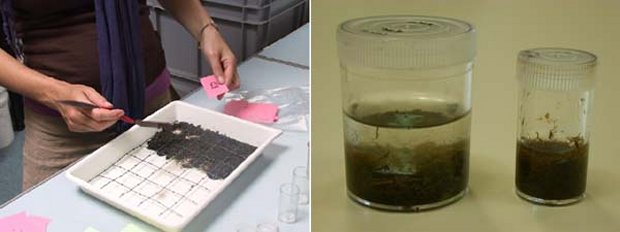
This results in two randomly selected subsamples, one for the large and one for the small fraction, which are examined in their entirety. The remaining sample is vacuum-packed again and stored in a refrigerator.
A stereomicroscope with up to 50x magnification and soft tweezers is used to examine sieve fractions (subsamples).

Stereomicroscope Leica MZ75 with up to 50 magnification
All seeds and fruits and other plant debris (cereal husks, pericarps, fruit heads, moss stems, etc.) that can be identified shall be removed from the material examined. Small animal finds (e.g. fish remains, insect remains, bones/teeth/coprolites of small mammals) are also extracted and handed over to the archaeozoologist.
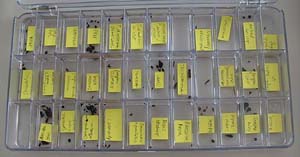
Sorting of botanical macroremains
If more than 384 identified seeds/fruits in each fraction are counted in the drawn subsample, i.e. 768 seeds/fruits in total, we can conclude that the sample has been screened, as we have achieved a statistically sufficiently reliable result. If this number has not been exceeded, the subsampling should be repeated and the sample resumed for further screening/sorting.
Identifying with the help of literature: (e.g. Beijerinck, 1947; Berggren, 1969 and 1981; Schoch et al., 1988; Anderberg, 1994; Jones et al., 2004; Cappers et al., 2006) and reference collection.
Useful literature
- ANDRIČ, Maja, TOLAR, Tjaša, TOŠKAN, Borut. Okoljska arheologija in paleoekologija: palinologija, arheobotanika in arheozoologija. 1. izd. Ljubljana: Založba ZRC, ZRC SAZU, 2016. ISBN 978-961-254-872-8. [COBISS.SI-ID 283335936]
- TOLAR, Tjaša, JACOMET, Stefanie, VELUŠČEK, Anton, ČUFAR, Katarina. Recovery techniques for waterlogged archaeological sediments: a comparison of different treatment methods for samples from Neolithic lake shore settlements. – Veg. hist. Archaeobot. 19/1, 2010, 53–67.